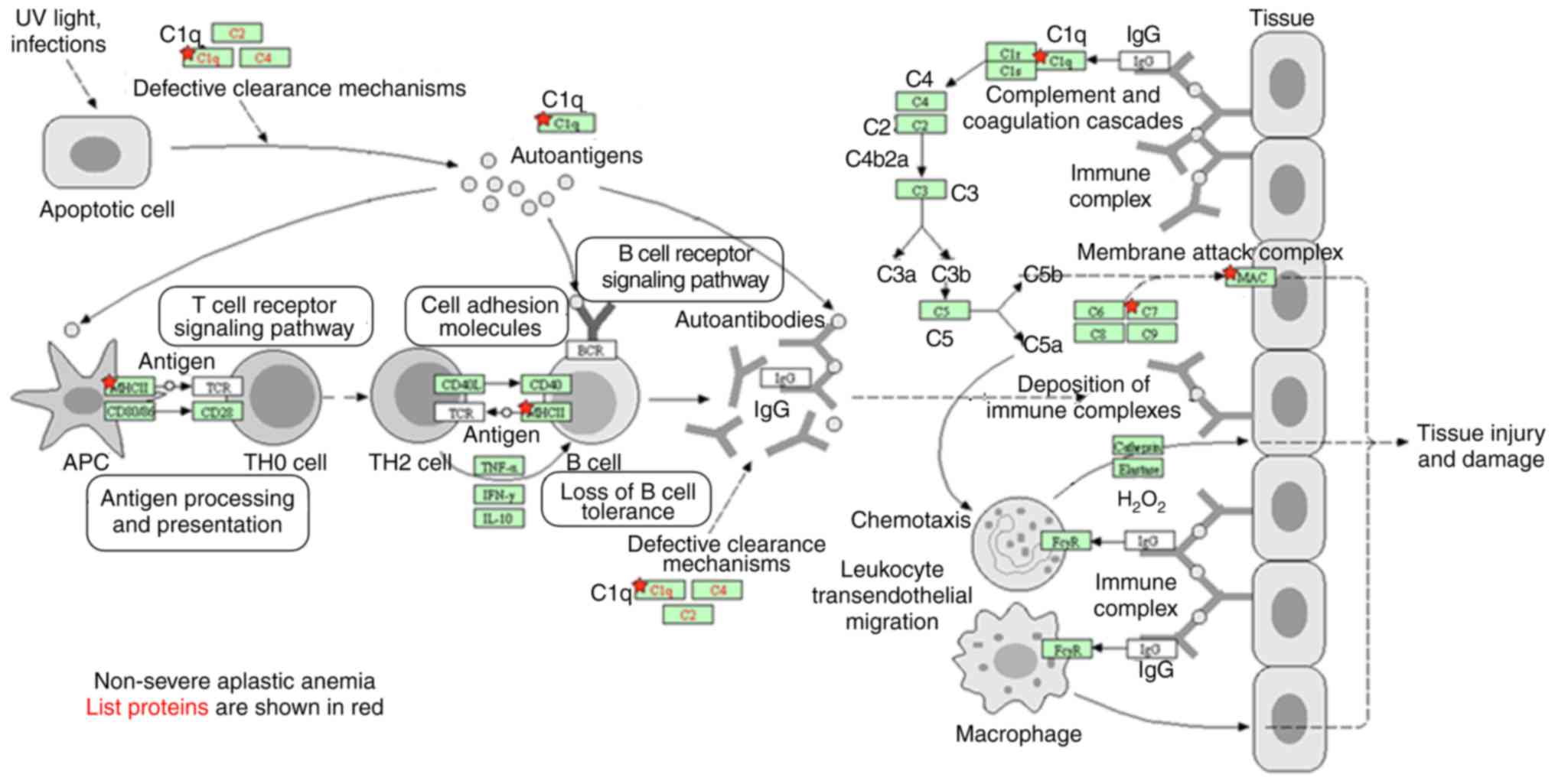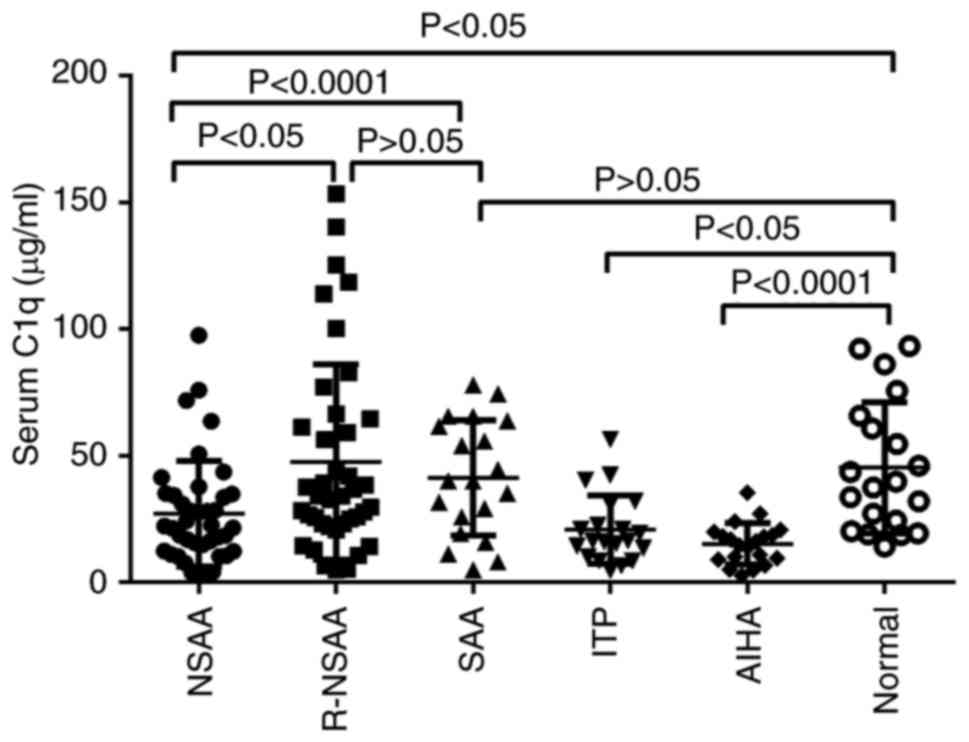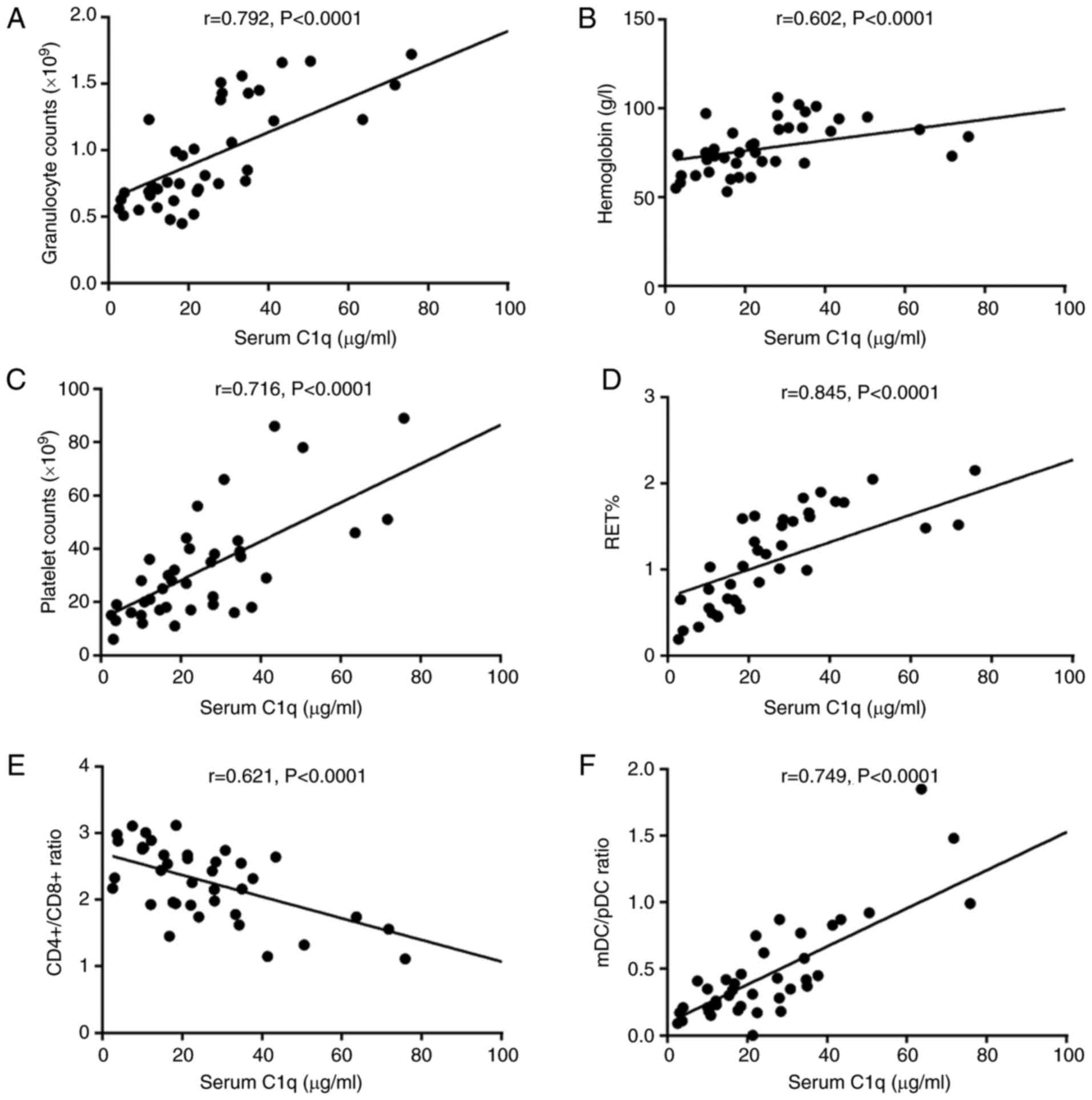|
1
|
Camitta BM, Thomas ED, Nathan DG, Santos
G, Gordon-Smith EC, Gale RP, Rappeport JM and Storb R: Severe
aplastic anemia: A prospective study of the effect of early marrow
transplantation on acute mortality. Blood. 48:63–70.
1976.PubMed/NCBI
|
|
2
|
Boddu PC and Kadia TM: Updates on the
pathophysiology and treatment of aplastic anemia: A comprehensive
review. Expert Rev Hematol. 10:433–448. 2017. View Article : Google Scholar : PubMed/NCBI
|
|
3
|
Bacigalupo A: How I treat acquired
aplastic anemia. Blood. 129:1428–1436. 2017. View Article : Google Scholar : PubMed/NCBI
|
|
4
|
Dezern AE and Brodsky RA: Clinical
management of aplastic anemia. Expert Rev Hematol. 4:221–230. 2011.
View Article : Google Scholar : PubMed/NCBI
|
|
5
|
Kwon JH, Kim I, Lee YG, Koh Y, Park HC,
Song EY, Kim HK, Yoon SS, Lee DS, Park SS, et al: Clinical course
of non-severe aplastic anemia in adults. Int J Hematol. 91:770–775.
2010. View Article : Google Scholar : PubMed/NCBI
|
|
6
|
Young NS: Current concepts in the
pathophysiology and treatment of aplastic anemia. Hematology Am Soc
Hematol Educ Program. 2013:76–81. 2013. View Article : Google Scholar : PubMed/NCBI
|
|
7
|
Brodsky RA and Jones RJ: Aplastic anaemia.
Lancet. 365:1647–1656. 2005. View Article : Google Scholar : PubMed/NCBI
|
|
8
|
Stanley N, Olson TS and Babushok DV:
Recent advances in understanding clonal haematopoiesis in aplastic
anaemia. Br J Haematol. 177:509–525. 2017. View Article : Google Scholar : PubMed/NCBI
|
|
9
|
Wang YH, Fu R, Dong SW, Liu H and Shao ZH:
Erythroblastic islands in the bone marrow of patients with
immune-related pancytopenia. PLoS One. 9:e951432014. View Article : Google Scholar : PubMed/NCBI
|
|
10
|
Liu H, Fu R, Li L, Ding K, Wang Y, Wang H,
Zhang T, Wang G, Song J and Shao Z: Erythropoietin receptors and
IgG autoantibody expression on nucleated erythrocytes in some cases
of immuno-related pancytopenia. Clin Lab. 61:693–698. 2015.
View Article : Google Scholar : PubMed/NCBI
|
|
11
|
Thurman JM, Frazer-Abel A and Holers VM:
The evolving landscape for complement therapeutics in rheumatic and
autoimmune diseases. Arthritis Rheumatol. 69:2102–2113. 2017.
View Article : Google Scholar : PubMed/NCBI
|
|
12
|
Ballanti E, Perricone C, Greco E, Ballanti
M, Di Muzio G, Chimenti MS and Perricone R: Complement and
autoimmunity. Immunol Res. 56:477–491. 2013. View Article : Google Scholar : PubMed/NCBI
|
|
13
|
Sontheimer RD, Racila E and Racila DM:
C1q: Its functions within the innate and adaptive immune responses
and its role in lupus autoimmunity. J Invest Dermatol. 125:14–23.
2005. View Article : Google Scholar : PubMed/NCBI
|
|
14
|
Marsh JC, Ball SE, Cavenagh J, Darbyshire
P, Dokal I, Gordon-Smith EC, Keidan J, Laurie A, Martin A, Mercieca
J, et al: Guidelines for the diagnosis and management of aplastic
anaemia. Br J Haematol. 147:43–70. 2009. View Article : Google Scholar : PubMed/NCBI
|
|
15
|
Fu R, Uehara T, Gong L and Shao ZH: Study
on the pathogenesis of blood cytopenia in patients with systemic
lupus erythematosus. Zhonghua Xue Ye Xue Za Zhi. 29:48–51. 2008.(In
Chinese). PubMed/NCBI
|
|
16
|
Moore CD, Ajala OZ and Zhu H: Applications
in high-content functional protein microarrays. Curr Opin Chem
Biol. 30:21–27. 2016. View Article : Google Scholar : PubMed/NCBI
|
|
17
|
Ardekani AM, Akhondi MM and Sadeghi MR:
Application of genomic and proteomic technologies to early
detection of cancer. Arch Iran Med. 11:427–434. 2008.PubMed/NCBI
|
|
18
|
Sui W, Tang D, Zou T, Zou G, Chen J, Li H,
Li L, Hou Y, Li H and Dai Y: Differential proteomic analysis of
renal tissue in mesangial proliferative glomerulonephritis using
iTRAQ technology. J Nephrol. 26:191–198. 2013. View Article : Google Scholar : PubMed/NCBI
|
|
19
|
Thomas SN, Zhang H and Cotter RJ:
Application of quantitative proteomics to the integrated analysis
of the ubiquitylated and global proteomes of xenograft tumor
tissues. Clin Proteomics. 12:142015. View Article : Google Scholar : PubMed/NCBI
|
|
20
|
Serada S and Naka T: Screening for novel
serum biomarker for monitoring disease activity in rheumatoid
arthritis using iTRAQ technology-based quantitative proteomic
approach. Methods Mol Biol. 1142:99–110. 2014. View Article : Google Scholar : PubMed/NCBI
|
|
21
|
Fujita T, Matsushita M and Endo Y: The
lectin-complement pathway-its role in innate immunity and
evolution. Immunol Rev. 198:185–202. 2004. View Article : Google Scholar : PubMed/NCBI
|
|
22
|
Duncan AR and Winter G: The binding site
for C1q on IgG. Nature. 332:738–740. 1988. View Article : Google Scholar : PubMed/NCBI
|
|
23
|
Sellar GC, Blake DJ and Reid KB:
Characterization and organization of the genes encoding the A-, B-
and C-chains of human complement subcomponent C1q. The complete
derived amino acid sequence of human C1q. Biochem J. 274:481–490.
1991. View Article : Google Scholar : PubMed/NCBI
|
|
24
|
Tsang-A-Sjoe MWP, Bultink IEM, Korswagen
LA, van der Horst A, Rensink I, de Boer M, Hamann D, Voskuyl AE and
Wouters D: Comprehensive approach to study complement C4 in
systemic lupus erythematosus: Gene polymorphisms, protein levels
and functional activity. Mol Immunol. 92:125–131. 2017. View Article : Google Scholar : PubMed/NCBI
|
|
25
|
Ghebrehiwet B, Hosszu KH and Peerschke EI:
C1q as an autocrine and paracrine regulator of cellular functions.
Mol Immunol. 84:26–33. 2017. View Article : Google Scholar : PubMed/NCBI
|
|
26
|
Alsuwaida A, Husain S, Al Ghonaim M,
Aloudah N, Ullah A and Kfoury H: Prognostic significance of C1q
deposition in serial biopsies for predicating the long-term outcome
in patients with proliferative lupus nephritis. Saudi J Kidney Dis
Transpl. 27:305–311. 2016. View Article : Google Scholar : PubMed/NCBI
|
|
27
|
Botto M and Walport MJ: C1q, autoimmunity
and apoptosis. Immunobiology. 205:395–406. 2002. View Article : Google Scholar : PubMed/NCBI
|
|
28
|
Pickering MC, Botto M, Taylor PR, Lachmann
PJ and Walport MJ: Systemic lupus erythematosus, complement
deficiency, and apoptosis. Adv Immunol. 76:227–324. 2000.
View Article : Google Scholar : PubMed/NCBI
|
|
29
|
Schejbel L, Skattum L, Hagelberg S, Åhlin
A, Schiller B, Berg S, Genel F, Truedsson L and Garred P: Molecular
basis of hereditary C1q deficiency-revisited: Identification of
several novel disease-causing mutations. Genes Immun. 12:626–634.
2011. View Article : Google Scholar : PubMed/NCBI
|
|
30
|
Buyon J, Furie R, Putterman C,
Ramsey-Goldman R, Kalunian K, Barken D, Conklin J and Dervieux T:
Reduction in erythrocyte-bound complement activation products and
titres of anti-C1q antibodies associate with clinical improvement
in systemic lupus erythematosus. Lupus Sci Med. 3:e0001652016.
View Article : Google Scholar : PubMed/NCBI
|
|
31
|
Gilliam BE, Reed MR, Chauhan AK,
Dehlendorf AB and Moore TL: Significance of complement components
C1q and C4 bound to circulating immune complexes in juvenile
idiopathic arthritis: Support for classical complement pathway
activation. Clin Exp Rheumatol. 29:1049–1056. 2011.PubMed/NCBI
|

















